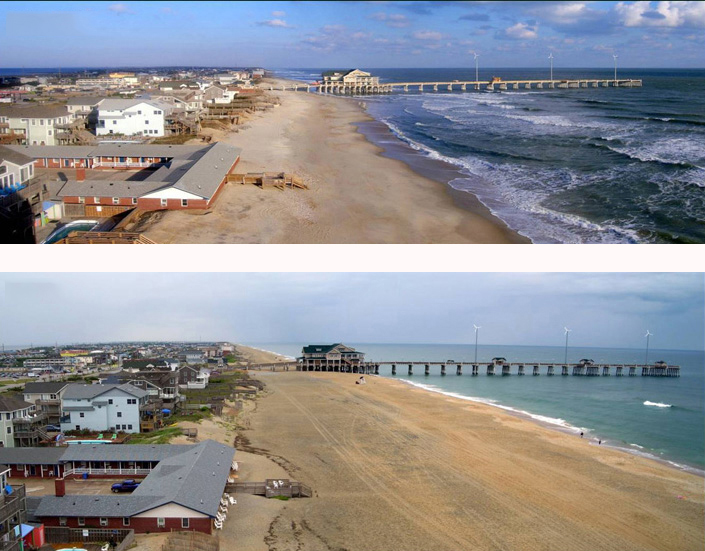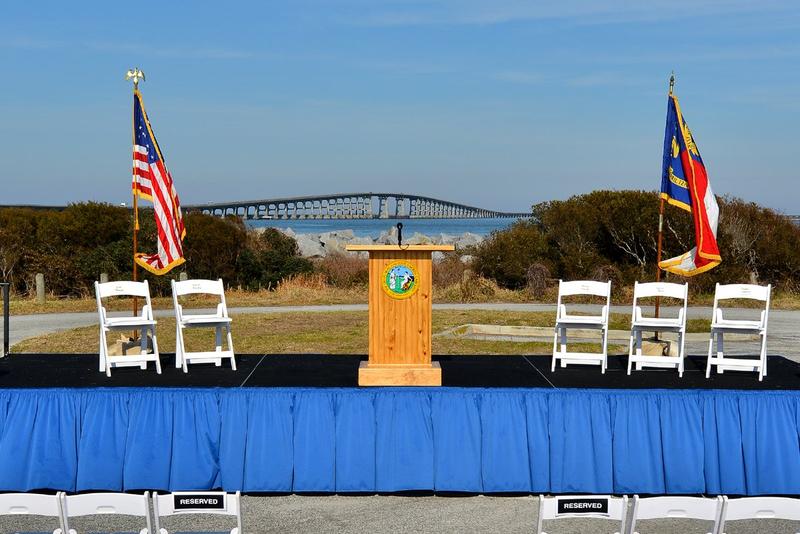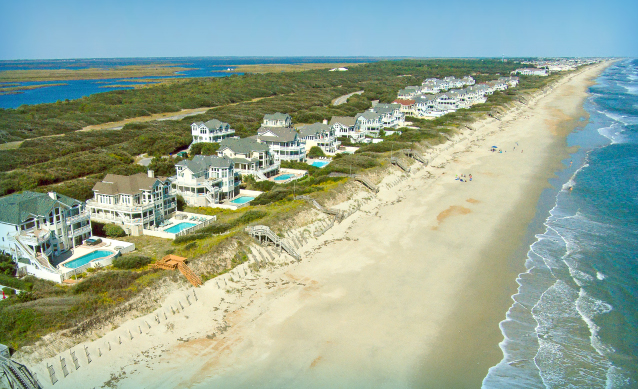What is beach renourishment?
Beach nourishment is the process of pumping sand onto an eroding shoreline to widen the existing beach. Sources of sand may include a nearby sandbar, a dredged source such as an inlet or waterway, or an offshore borrow site along the ocean floor. The widened shoreline provides increased defense from coastal storms and beach erosion protecting property, communities and infrastructure located along the shoreline.
Projected Town Schedules ::
Duck :
The start date is late May and should run through early July. The duration for the entire project is forecast to take 45 days.
Southern Shores :
Late June through Early July is the start date. The duration of the project is just 7 days.
Kitty Hawk :
Start date of early July through mid-September, with the duration of the project lasting 74 days.
Kill Devil Hills :
Early August through mid-September. Total duration slated for 40 days.
Buxton :
Starting the last week of May through the end of August. The longest duration of all towns at 90 days.
Previously Completed Projects
Over 4.5 million cubic yards of sand was placed along the designated ten-mile shoreline project area.
before & after

F A Q s
How will beach renourishment affect my visit to the Outer Banks?
Many Outer Banks areas will not be impacted by the current project. However, if you are visiting the beaches in portions of Duck, Southern Shores, Kitty Hawk or Kill Devil Hills between May and September, you may be affected. Beach renourishment is also happening in Buxton on Hatteras Island from June through the end of August. Depending on the location of the operations, you may experience some temporary construction noise, night illumination and beach access diversions.
Why does dredging take place during the summer months?
Dredging operations offshore of the Outer Banks typically take place in the summer months because it is much safer for the crews working on the offshore dredge. The increased risk of safety and anticipated decreases in productivity in the winter months when sea conditions can shut down dredge operations were found to drive the cost of the projects up to a point where they would have no longer been financially viable.
How long will the construction affect my property?
About 1,000 feet of beach will be directly impacted during the construction at any one time, and a portion of this area may be closed. Construction is anticipated to impact properties between 3-5 days. Once a section is pumped into place, it should be re-opened for use within 24-48 hours. Sand ramps will be placed over a temporary pipeline at every public access and then in intervals of no more than 200-300 feet, allowing people to get across and enjoy the beach seaward of the pipeline.
Will I be able to get to the beach while the project is underway?
Yes, you will be able to access the beach. If construction limits access directly in front of your property, you may need to enter the beach at an alternate beach access.
Where will the sand come from?
For the beach renourishment projects occurring in the Towns of Duck, Kitty Hawk, Southern Shores and Kill Devil Hills, the project consultants have identified two potential offshore sand borrow source areas for this project. One location is offshore near Kill Devil Hills and the second location is offshore of Duck. For the beach renourishment project occurring at the northern end of Buxton on Hatteras Island, the project consultants have identified a sand borrow source 1.7 miles offshore.
Do they work certain days of the week, or certain hours of the day?
The contractor will work 24 hours per day, seven days per week until the project is complete, depending on weather conditions.
Is the construction noisy?
You will be able to tell that there is construction operations underway in front of your property. The sounds you will typically hear are the back up alarms from the bulldozers and trucks, which are required by federal law. Lights will also be used on the beach throughout the night and may be visible from homes.
How is beach renourishment funded?
A portion of the 6% Occupancy Tax collected by Dare County is set aside for the Beach Renourishment Fund. The occupancy tax is applied to gross receipts derived from the rental of room, lodging, campsite, hotel, motel, inn or tourist camp, including private residences and cottages rented to visitors. The Beach Renourishment Fund must be used for the placement of sand, from other sand sources, the planting of vegetation and the building of structures that are in conformity with the NC CAMA, such as sand fences and dunes on the beaches of the Atlantic Ocean for the purpose of widening the beach to benefit the public recreational use and mitigating damage and erosion from storms to inland property.






